Review: Samsung Galaxy S5 for AT&T
Apr 18, 2014, 6:01 AM by Eric M. Zeman
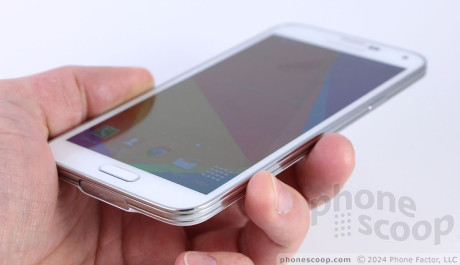
Samsung delivers a delightful device in the Galaxy S5. This powerful Android smartphone offers a more refined experience than its predecessor and manages to raise the bar at least a little bit.
Form
Intro
The Samsung Galaxy S5 is the Korean company's main flagship device for the next year. Samsung said it took a "back to basics" approach in designing the GS5 and assigning it features. The device is certainly an improvement over the GS4, but it's hard to recommend rushing out to the store if you already have last year's phone. Who is it for? Well, if you just have to have the latest and greatest, if you're due for an upgrade, and, most importantly, if you have a two-year-old Galaxy S III, then this is the device for you.
Body
The Galaxy S hasn't changed all that much between 2012's S III and 2014's S5. Like Apple and its iPhones, Samsung treads carefully with its main money-maker and doesn't rock the boat year-over-year. It wants to be sure the new phone appeals to those who bought the old one. That's why the hardware evolution from the GSIII to the GS4 and GS5 is minimal. There are definite changes, but Samsung kept them low key so as not to scare anyone off.
The Samsung Galaxy Note 3 may be the classiest device in Samsung's current lineup, but the GS5 is only a small distance behind it. You might almost call it a Note 3 Mini. The phone uses a pleasing mix of glass, chrome-colored polycarbonate, and plastic to create the curves and surfaces. It is a clear step up from the dizzying number of mid-range models made by Samsung. The conservative color combinations (white, black, gray, chrome, etc.) are attractive in their own way. I like the way the chrome forms a rim around the front face of the device, and the patterned back panel is more appealing to me than the glossy plastics of previous models. Samsung has created a design language all its own, and that's fine. I do think Apple, HTC, and Nokia manage to make nicer hardware that's of higher quality, but there's absolutely nothing wrong with the Galaxy S5.
The GS5 is a decent size, thanks to the generous display. It is wider than the HTC One, but shorter. The GS5 dwarfs the iPhone 5s and is appreciably bigger (taller and wider) than the Nexus 5. I found it mostly comfortable to hold, though the attractive chrome rim around the display also forms an irritating lip. The lip is meant to protect the screen, but it gives the front face a sharp edge that I dislike. The weight is fine, and despite the size increase the GS5 should still slip into most pockets easily.
The materials and build quality are the best-ever from Samsung, but not the best I've seen. The cheap, slippery plastic back is gone, replaced by a golf-ball patterned back surface that feels much, much better to touch and hold. The phone is tightly assembled: All the seams are perfectly straight, and there's no bending or flexing of any parts. One of the GS5's whiz-bang features is protection from water and dust. This likely plays a role in its solid assembly. The GS5 carries an IP67 rating, which means it can keep water out for about 30 minutes in three feet of water (provided you firmly close the hatch covering the charge port) and it won't be bothered by blowing dust. I plunked the GS5 in a bowl of water, held it under a running faucet and even brought it into the shower. Sure enough, the claim is true. It suffered no water damage despite spending some time in the bath. Samsung is smart enough to remind people to firmly close the battery cover, which includes gaskets meant to keep water from seeping into the internal components. This is vital. If the back cover is not properly snapped on, and the microUSB hatch not securely fastened, the GS5 is not waterproof. The GS5 is not rugged. If you drop it from chest height onto concrete, it's probably going to break.
Samsung kept the GS5's bezel to a minimum. The display consumes most of the front and it isn't surrounded by ungainly amounts of additional glass. It practically runs edge-to-edge. The Samsung logo is emblazoned above the screen in silver and often catches the light. There's a slit in the glass for the earpiece speaker, which is accented in chrome, as well as several sensors and the user-facing camera. Samsung didn't stray from its long-preferred button setup. There's a single physical key below the display. It's wide, rimmed in chrome, and easy to find thanks to its perfect profile. The home button's travel and feedback is excellent. This button also doubles as a fingerprint reader (more on that later.) There's a capacitive Menu button on the left and a capacitive Back button on the right. These two buttons functioned without issue, and can be set to vibrate or not depending on your preferences.
The volume toggle is positioned on the left edge of the phone. It is a short, thin strip that protrudes nicely from the side. It's no trouble to locate, and the travel/feedback are quite good. The same is true of the screen lock button, which is on the right edge. There's no dedicated camera button, which is a shame. The stereo headphone jack is on top and the micro-USB port is on the bottom. The GS5 has a USB 3.0 port that supports both the larger, faster USB 3.0 SuperSpeed connectors and the regular old micro-USB connectors you're probably used to. For some reason the device ships with a USB cable with the smaller, slower connector. The hatch protecting it requires just a bit of effort to open and close thanks to the gasket.
The GS5's camera module is larger than in years past and has a noticeable hump. There is a separate module below the camera in a rather deep depression. This module holds the flash and heart rate monitor (more on that later). There are a couple of slits in the plastic back panel near the bottom for the speakerphone. It's not too much trouble to remove the battery cover. The battery itself is removable, but of course it's a different size/shape than last year's battery. The SIM card and microSD memory card slots are stacked with the memory card on top. Memory cards can be removed without pulling the battery, but the battery has to be pulled in order to retrieve the SIM card. You need to be extra careful when reinstalling the back cover. Make sure all the clips are snapped in place in order to ensure the GS5 is resistant to water.
In sum, the Galaxy S5 represents the pinnacle of hardware design from Samsung, such as it is.
Performance
Screen
The GS5's display is a Super AMOLED panel measuring 5.1 inches across the diagonal with 1920 x 1080 pixels. It's fractionally larger than the GS4's screen. Samsung certainly didn't drop the ball when it came to the display. The screen is fantastic through and through. I have no complaints whatsoever. It is large, pixel-rich, colorful, and bright. I didn't have any trouble using it indoors or out. All the graphics and UI elements are smooth and show no signs of pixelated edges. It's a truly good screen, just as good as that of the HTC One. Samsung knows how to make excellent displays.
Signal
In testing the AT&T variant of the Galaxy S5, I found it to be a strong performer. It always showed a signal, even in areas with weak coverage. The GS5 didn't have any trouble connecting calls no matter what the signal indicator read. Every dialled number connected on the first attempt, but it did drop one call when transferring the signal between two cells. Data sessions were generally speedy through AT&T's LTE 4G network. Raw download speeds fell into the average range for LTE devices, which, based on my observations, is about 12 Mbps in the real world. That's plenty fast enough for downloading apps and uploading Instagram shots. (It's a bummer the AT&T version lacks Samsung's Download Booster, which combines Wi-Fi and LTE to speed up downloads.) The GS5 didn't give me any network trouble of note.
Sound
I was impressed by the quality of voice calls with the GS5. Conversations were bright and present. I heard voices coming through the speaker clearly. Background noise and hissing were entirely absent. It was as if the person on the other end of the phone were calling from the quietest spot on earth. I heard only their voice. Volume could be a lot better, though. Calls were audible in regular environments, such as an office or house, but were harder to hear at malls, coffee shops, and in the car. Setting the volume all the way up didn't help much. Both "good quality" and "mediocre volume" are also apt descriptors of the speakerphone. The speaker produces clear, clean voices, but isn't loud enough for all environments. Thanks to background noise elimination, those with whom I spoke through the GS5 said I sounded as if I were in the same room as them. Ringers and alert tones offer plenty of volume to get your attention. The vibrate alert is particularly strong. What's better, you can control the intensity for calls, messages, and so on. The GS5 even lets you select from 6 prerecorded vibrate patterns and create your own. I didn't miss any calls or messages for lack of hearing the phone.
Battery
That Galaxy S5 offers fantastic battery life. The 2,800mAh is slightly bigger than last year's phone, and the Snapdragon 801 processor is better at managing power. The GS5 shows clear gains in useable up time compared to the GS4. I ended most days with 40% or more left in the battery, despite thorough testing and heavy use from 7 AM to midnight. I think it's safe to say most people won't have to worry about draining their battery unless they play games all day long. Even then, the odds of making it are pretty good.
Like the HTC One, Samsung gave the GS5 a power saver mode - and an ultra power saver mode - that can be used to extend the useful life of the phone. The power saver can be toggled on manually, or automatically set once the battery reaches 20%. Users can opt to block background data, restrict performance (ramp down the processor), or set the display to grayscale mode. Ultra power saving mode takes it a lot further. It sets the screen in grayscale mode, turns off all data when the screen is off, turns off Wi-Fi and Bluetooth, and only permits six user-selected apps to function, three of which are phone, messaging, and email. Power saver mode and extreme power saver mode will provide estimates (when switched on) of how long the phone will continue to function based on the remaining charge. For example, with ultra power saver mode on and the battery at 82%, the GS5 says it can continue to operate for 10.2 days.
The GS5 should provide the bulk of users with enough juice to get through the day. In the event it doesn't, these energy efficiency modes can be used to eke out enough time to find a charger - even if that's not for several hours.
Basics
Menus
The GS5 runs Android 4.4.2 KitKat with an updated version of Samsung's TouchWiz user interface laying on top. If you're coming from any other Galaxy-branded Samsung device, you're going to feel right at home.
I tested the GS5 side-by-side with the GS4 and honestly couldn't tell the two apart as long as I stayed on the home screens and in the app menu. The home screen panels are completely customizable, and the app menu can display apps in an alphabetical grid, in a custom grid, or in an alphabetical list. You can make use of folders to keep the app menu (and home screens) organized. Anyone remotely familiar with Android will know exactly what to do with the home screen panels and app menu.
The lock screen is mostly unaltered. By default, there's a software shortcut to the camera, but you can add more if you want. The lock screen can show one or two clocks, the date and weather, select notifications, and of course a series of different locks. One of the locks can be your fingerprint, thanks to the fingerprint sensor built into the Home button. The fingerprint sensor needs to be trained and can store several different fingers if you wish. I had no trouble training it, but initially had mixed results actually using it to unlock the device. It often took several attempts to get a good reading one once the phone gave up and asked for my backup password. As far as I am concerned, "good" isn't good enough. The reader got a little more responsive after about a week of use. I am serious about locking my phone to protect my personal data, but I want to get past the lock screen as quickly as possible. If it takes two or three tries to get past the fingerprint reader, I am going to skip it and use a PIN or regular password. For the record, I had approximately the same experience with the fingerprint readers of the iPhone 5s and HTC One max. One other noteworthy observation: using the fingerprint reader to unlock the GS5 is practically impossible one-handed. In order to make it work, you need train your thumb as the lock and swipe it just so. I nearly dropped the device several times in making the attempt. It's awkward at best.
The other really big change in the user interface is the settings panel. Samsung did away with the easy-to-use, default for settings tools provided by Google in favor of an icon-laden screen that's ridiculously annoying. I want to find and adjust settings quickly. I don't want to hunt for them. The new settings panel is far too confusing. It attempts to lump certain settings together (such as wireless radios), but duplicates the controls several times throughout. Samsung has the settings broken down into nine different categories (Quick, Network, Connect and Share, Sound and Display, Personalization, Motion, User and Backup, System, and Applications). As you can tell, there's plenty of room for redundancy. Thankfully, the view can be changed to a list view or a tab view. The list view is slightly easier to manage than the grid view.
The notification tray is as useful as ever. It adopts design language similar to the settings panel, but the effect is much different. The icons and toggles are easy to read and discern from one another. I do dislike how much junk has become part of the notification tray, though. In addition to toggles for the radios and other controls, there's a brightness slider, another row of controls, and then the notifications. The extra controls take away valuable real estate from the notifications.
The GS5 offers Samsung's Easy Mode, which is an optional, dramatically simplified user interface. It's meant for first-time smartphone owners and helps them get over the initial hump of using a touch screen device. It makes icons and text larger, removes home screen panels, and dumbs down the menus into simple lists.
The phone also offers a one-handed mode, which shrinks the UI down by about 25% to one corner. The idea behind one-handed operation is to make elements such as the keyboard, dialpad, and other controls align with the side of the phone so you can reach everything with your thumb. With its 5-inch screen, even my big hands can't stretch all the way to the upper corner unless I reposition the phone or use this mode. The one-handed mode can be turned on with a quick (very quick) back-and-forth swiping gesture. It took one or two practice swipes to get it correct, but once learned it worked without issue.
If you're curious about performance, no need to worry. The GS5 kicks most other phones' butts. It has a quad-core Qualcomm Snapdragon 801 processor under the hood. This chip is an animal and makes mincemeat of most apps and services. It never felt sluggish or bogged down. It's a quick phone.
Calls and Contacts
Samsung changed very little in the phone and contact apps when compared to earlier versions of the Galaxy S. The phone app itself is more or less the stock version of the Android dialer, but it is reskinned with Samsung's TouchWiz UI effects.
The phone app itself offers plenty of customization powers that really let you dig in and make the phone's behavior your own. When the dial pad is visible, tap the menu button and you'll see an options screen for the phone. Here is where you can set rejection behaviors, alerts, answering/ending calls, set up voicemail, and control the TTY functions. You can turn on/off noise cancellation, as well as dial in your own preferences for volume, clarity, and warmth. I was hoping there'd be a volume booster to improve call volume, but that feature has been removed.
The contact app also behaves more or less like the stock Android contact app. Favorites are accessible from a tab at the top of the phone app, as is the entire contact database. There are standard home screen shortcuts for direct access to a contact on the home screen panel, as well as a direct dial, and direct message, but there isn't a larger widget for your favorite contacts.
Messaging
The GS5 follows a typical Samsung pattern when it comes to messaging apps. The native communication tools include email, Gmail, email, Google+, and Google+ Hangouts. Neither Facebook nor Twitter is pre-installed. Samsung's own ChatOn app is pre-installed. ChatOn is a cross-platform IM app that uses data rather than SMS to deliver messages. The GS5 also has the generic SMS app from Google.
AT&T's Messaging app is also included. This is a catch-all instant messaging app that bundles together IM functions and SMS into one. The idea is to give you one spot in which to manage your SMS and IM threads. It's an OK service, and accomplishes its main goal without trouble. However, in my opinion, it's a bit clunky to use, and the individual apps it attempts to replace (SMS, Hangouts, Yahoo IM, etc.) are more feature-rich.
My Magazine
Samsung is introducing its own version of HTC's Blinkfeed or Flipboard on the GS5 with an app called My Magazine. Like Blinkfeed, My Magazine consumes one of the GS5's home screen panels. By default, it is set to pull down select headlines from a few different sources and create a visually pleasing magazine spread with them. You can, of course, adjust the news sources and tie in your own social networking accounts. Both Flipboard and Blinkfeed offer a much larger pool of potential content sources, though. Samsung's My Magazine is limited to generic feeds rather than specific ones. For example, there's a "Music" feed, but not a "Rolling Stone" feed; there's a "Sports" feed, but not an "ESPN" feed. As far as social networks go, it can hook into Twitter, Facebook, YouTube, Tumblr, LinkedIn, Google+, Flickr, 500pix, RenRen, and SINA Weibo. The other thing I don't like is that all the content is displayed in a rigid column, with each story given equal weighting. Blinkfeed and Flipboard each change up the design, making some stories bigger or smaller. It's a small visual preference, I suppose, but leaves My Magazine feeling a little flat. If you're the type who likes to consume content from numerous sources in one feed, My Magazine gets the job done. Curiously, the GS5 ships with Flipboard preinstalled.
Extras
Media
None of the media apps packaged on the AT&T GS5 will surprise you. The device includes the typical list of stock Google-made "Play" apps. The Google music, video, TV, book, and magazine stores are all fine places from which to rent or purchase content. The individual apps to consume them are decent and haven't changed in quite some time. The GS5 also includes the standard YouTube app, a generic MP3 player for sideloaded music, and a generic video player for sideloaded video. AT&T's crummy Mobile TV app is also on board. This for-pay app lets you stream live and pre-recorded content over AT&T's network. It's not worth it. Milk, Samsung's brand new music streaming service, is curiously absent.
The shining star is the Samsung-developed Smart Remote app. As on last year's GS4, the Smart Remote app can both control your home theater equipment and also peruse various content sources for something good to watch. Setting up the remote is a cinch. It walks you through the process of pairing with various devices and doesn't take more than a few moments to lasso control over your TV, cable box/DVR, Blu-Ray player, and receiver. The app's "smarts" come from the Peel engine. Answer a few questions and the app will be able to interact with all the content from your cable provider, as well as view schedules in advance, interact with the DVR, and so on.
All smartphones need to come with apps like this for several reasons - the most important being that my kids continually lose the remote control to my TV. My phone is *always* in my pocket, so having a backup remote is great. Adding access to my video content is icing on the cake. Having access to the guide on my device without interrupting the show I'm watching is much appreciated.
The odd man out here is Beats Music. Like many others, it is a streaming music service. AT&T lets users pay $5 extra per month to include unlimited streaming and such with their data plan. It's "odd" because Beats Music is run by Beats Audio, which used to be partially owned by HTC. Anyway, a trial version of the service worked fairly well, though I think Pandora, Slacker, and Spotify offer better UIs and song selection.
Camera
Samsung toned down the camera software, and that's a very good thing. The Galaxy S4's camera was so packed with features and options, it sometimes felt a bit overbearing. Samsung's research said that most of the features went unused by the bulk of people, so it trimmed the fat, so to speak.
I like the new layout a lot. The viewfinder fills the entire screen; the controls float within. There are some quick settings available on the left side of the screen, including a toggle for the user-facing camera, selective focus, HDR, and the full settings. The action buttons on the right include a dedicated video camera button, a separate shutter button, and access to the various shooting modes and gallery.
The full settings are newly organized in a grid of icons. It is much easier to interact with them and understand exactly how changes you make will affect the outcome. I really dig this. Further, it is customizable; You can drag the icons for the settings around in the grid and arrange them however you like. The GS5 offers control over picture size/resolution, metering modes, stabilization, timer, white balance, exposure, guidelines, shutter sound, and on. Basically, everything you need is there.
Samsung really sliced excess from the shooting modes. Where the GS4 had a dozen different shooting modes, the GS5 has six different shooting modes preinstalled. They are auto, beauty face, shot & more, panorama, virtual tour, and dual camera. There is also a link in the mode listing to the Samsung app store where you can download more modes if you want, such as sports mode, which isn't included on the GS5 out of the box. The only new mode is the one called virtual tour. This mode lets you create a video as you move through a space, such as your house. I imagine real estate brokers are going to love it. It's a bit unwieldy to use and takes a lot of practice to get right. The software guides you through the process, but you have to be patient. It's slow going. It takes a handful of shots and then pastes them together with panning motions so you feel like you're touring a room or other space. Personally, I prefered having sports mode.
Samsung was smart to make the HDR feature accessible all the time. You can turn it on or off quickly when needed, and I find that really helpful. The same goes for the selective focus control. Like Nokia's ReFocus tool or a Lytro camera, selective focus lets you blur the background while the foreground is in focus and vice versa. You need to have a clearly defined subject and background in order for the feature to really work. Images turn out best if you are really close to the main subject. In fact, Samsung recommends you be about 1.5 feet away, with the background object at least 5 feet from the foreground subject. After you take the image, you can edit it later. You can set the foreground to be in focus, the background to be in focus, or both to be in focus. This shooting mode also takes a little bit of practice to use properly, but the results are cool. The similar mode in the HTC One is slightly easier to use, but the results are about the same.
For whatever reason, picture stabilization is on by default. I suggest you deactivate it. Why? It is slow as hell. Every shot takes several seconds to focus and capture. When turned off, the GS5's camera will focus almost instantly and can take pictures as fast as you can press the shutter button.
I'm a big fan of the new camera app.
Photos
The GS5 captures images as large as 16 megapixels in the 16:9 aspect ratio or 12 megapixels in the 4:3 ratio. I was pleased with the shots I got. The GS5 attained razor-sharp focus, good exposures, and accurate white balance. Few of the shots were wasted. Look at the rocks beneath the pink shovel for an example of sharp focus. The dandelions look pretty good, too. In general, the pictures are better than those I got with the HTC One. Most people will be pleased with the shots they take, even if all they ever do is use the automatic mode. GS5 owners to take time to explore the different shooting modes will be rewarded with images that go beyond the ordinary.
The front camera does a good job, too, as evidenced by the back/front selfie below.
Video
The GS5 can shoot 4K (Ultra HD) video, but it is wasted without a 4K TV on which to view it. Skip recording in 4K entirely unless you have a monitor that can show it or you need the highest possible resolution. The 1080p HD video that I captured looked great. I was really impressed with the quality of focus, exposure, and white balance. The results accurately represent the real-world scene I recorded. Your YouTube fans will be impressed, no doubt.
Gallery
The GS5 uses a Samsung-designed gallery application, which offers some fun extra features. The device will automatically sync thumbnails from your Google+ and Dropbox accounts, but you can thankfully turn these off. There's a drop-down menu accessible from a button at the top of the screen for sorting between albums.
When you dive down into the individual galleries, the GS5 goes into a split-screen mode: a vertical list of other galleries forms a strip along the left edge of the screen, and the rest is reserved to show larger thumbnails of the images in the gallery you chose to view. You have to press one of the thumbnail images to go into a full-screen view of that image. The entire screen of thumbnails can be pinched to make them smaller or enlarged. This can be a really good birds-eye view of an entire album at once if it has a lot of images inside. Once you open a single image, you can swipe through photos and share quite easily thanks to the numerous options in the gallery app.
The editing features are extensive. No only does the GS5 offer crop, resize, and rotate, but it includes a number of handy tools for making OK photos exceptional. It allows users to adjust brightness, contrast, saturation, and red/green levels. It includes a number of Instagram-like effects. There's a suite of tools for touching up portraits, such as red-eye reduction, airbrushing, and blurring. Now you have no excuse to look like an unkempt mess in your selfies.
The GS5 also includes the Google+ Photos app, which can be used to sync and backup images to your Google account.
Apps
Samsung deleted a lot of the screwy apps that were on the GS4, such as S Translator, Story Album, and even the Samsung Hub - its own content store. There is a Samsung app store though, where you can download all the silly Samsung apps you want. AT&T has 11 different apps on board, most of them useless duplicates of stock Android apps. Can't you let users decide if they really want to have AT&T FamilyMap clogging up their storage space, AT&T? I'd be fine with a separate AT&T app store if it got rid of all the bloatware.
Samsung carried over a bunch of the GS4's more interesting functions, such as Air View, Smart Stay, S Finder, S Voice, and multi-window for running two apps at a time.
S Voice runs a bit smoother, though I had mixed reactions as far as transcribing text is concerned. Further, you still can't do things like ask it to send an email. S Voice can open apps, but can't do much beyond that. Siri and Cortana have more personality, and Google Now is simply better at everything.
The Multiwindow view runs two apps side-by-side in a split screen environment. It functions just as it does on on the GS4, Note 3, Note II, and Note. Only select apps, such as the browser, email, messaging, YouTube, and Gallery are compatible with the multiwindow view. Setting up the two windows and interacting with them is a breeze.
h Samsung and AT&T have data usage tools so you can monitor how much data you consume in a given day, week, or month. Sharing content from the GS5 to other screens is easy thanks to a screen-mirroring tool. Music and video content can be pushed to TVs and stereo systems via Samsung Link. It is brain-dead easy to use and can connect to most any nearby device.
The phone comes with what Samsung calls Blocking Mode. It's basically a Do Not Disturb function. It lets you set times when notifications are turned off. The app allows you to select certain contacts who will be able to reach you even if all others are blocked. Blocking Mode can be controlled manually, or set to come and go off at certain times each day. Its functional and works well.
Bluetooth
The GS5 supports Bluetooth 4.0 LE. I was able to pair it successfully with a number of different devices, including headsets and speakers, as well as other smartphones and PCs. Phone calls routed to a headset offered good quality, but were very quiet even with the headset and GS5's volume set all the way up. Since the GS5 supports the aptX profile, music sounded amazing coming from aptX Bluetooth speakers.
Browser
The GS5 ships with an AT&T-skinned version of the stock browser in addition to Chrome. The AT&T app has toolbars that come and go as you browse through sites. One at the bottom offers basic back, forward, home controls, as well as a link to your favorites and a notepad. The top navigation bar lets you type in web addresses as well as manage tabs and so on. The browser does a fine job of rendering web sites and was quick over AT&T's LTE network. Chrome is Chrome. It looks and acts the same way as it does on other Android devices. It performed well on the GS5 and AT&T's network.
Clock
You can choose to put a clock on the lock screen or not. Your call. If you do, it'll be a large, white, digital clock positioned near the top of the screen. The weather can be paired with it, which shows the current conditions wherever the GS5 happens to be. I wish you had more control over the lock screen clock.
GPS
AT&T Navigator and Google Maps are both preloaded. The GS5 performed excellently as a navigation tool. It pinpointed me in about 5 seconds consistently, and had no trouble plotting routes and finding nearby points of interest. Google Maps is free, of course, and Navigator carries a monthly fee. Maps offers all the same tools as Navigator and more with features such as Street View.
Private Mode
The GS5 introduces Private Mode, a special, sealed-away part of the OS that is password protected. Private Mode is mainly meant to protect sensitive files. It can interact with the photo gallery, the Google+ Photo app, the MP3 and video player apps, as well as the file browser. You can, in effect, hide pictures, songs, and videos you don't want others to see or hear. Though pictures will technically exist in the gallery app, they can only be viewed when in private mode, for example. Private Mode could certainly be appealing for business users, as it lets them lock away work files if they wish. It can also come in handy for those who like to send unclothed selfies to certain people, or for those who may want to keep some adult content on their device and take comfort that others won't be able to view it.
S Health
S Health has been given a fairly significant overhaul for the GS5. The app taps into a bevy of sensors and can be used as a fitness pal and diet planner all in one. S Health forces you to create a profile, including your age, sex, height, and weight. It automatically calculates your body mass index and asks how active you are in general. You can use the app to track walks, runs, hikes, and bike rides. The GS5 has a built-in pedometer and heart rate monitor. Pair these with the calorie tracker and you really have a good idea of your fitness level. I found the pedometer to be fairly accurate at counting steps and measuring approximate distances. The heart rate monitor was also accurate, as it delivered the same result that my treadmill did. The one bummer is that you have to be still to track your heart rate. This means you can't track while you're actually working out. You have to stand still for 30 seconds with your finger on the sensor to get an accurate reading. That kind of stinks.
The food tracker is quite insane. For example, I had yogurt for breakfast one day. I entered that into the food tracker and was able to pick out the exact brand of yogurt I ate, including the flavor! The food tracker can really find anything you search for, which is very helpful if you're monitoring calories strictly. You can track breakfast, lunch, dinner, and snacks. The software automatically knows how many calories you need to consume to maintain your current weight. It can help you set limits if you actually want to lose weight.
S Health is a solid fitness partner, there's no doubt.
Wrap-Up
Samsung took the Galaxy S5 in the right direction. The GS4 was so clogged with features - half of which felt like gimmicks - that it was overwhelming. The GS5 stripped out the GS4's flabby functions and left the best ones intact.
The hardware is the best I've seen from Samsung, though definitely not the best I've seen when compared to the competition. The GS5 feels like it is made from better materials than previous devices and is assembled with a greater degree of care. The added protection from water and dust is a welcome feature, and the overall design, though conservative, could be considered classy be some. The screen is dazzling, voice quality is good, battery life is impressive, and the GS5 performs incredibly well when it comes to powering apps.
Samsung evolved its TouchWiz user interface a bit. While the basics remain mostly unchanged, several of the screens and apps received redesigns. The camera app has been improved dramatically and the GS5 does a great job of taking pictures. The media options are plentiful, and Samsung took care to add some truly useful tools, such as Private Mode and S Health. The fingerprint reader is a neat idea, and it works fairly well. I find passwords and/or PINs to be faster at unlocking the device, though.
There's no doubt the Samsung Galaxy S5 is one of the best phones you can buy. It goes toe-to-toe with the HTC One, Nokia Lumia Icon, and iPhone 5s in terms of general quality and features. Some may prefer the design aesthetics of Samsung's competitors, but the company did about as good a job as we could have expected with the GS5. Given the array of purchasing options available to consumers these days, I strongly recommend the Galaxy S5.
Comments
Battery Life: Note3 vs. Galaxy S5???
I understand the difference in mAh between the phones, but what about real-world function?
I'm trying to make a decision between the two and would like to go with the device with more battery life.
BTW, I am not at all happy that Samsung is pushing the 16GB variants on the consumer and not offering larger 32, 64 or 128GB. So dissapointing.
Thanks!
Pretty much explains why Samsung copied Apple
Just about any competing phone- the Motorola X, the Nexus 5, the HTC One- all of them are leagues better in terms of feel, solidity, and hell- aesthetics (subjective, but c'mon.)
Special points for:
-The poor imitation of the beautiful low-poly background used by Google/Motorola that Samsung is using.
-The totally arbitrary colors of the settings icons that don't seem to correspond with anything
-The fingerp...
(continues)
(continues)
Oh and blue you forgot about the crappy speakers, ugly design and cheap build quality although I think you covered that when you mentioned aesthetics
I chose the HTC...
(continues)
Love It!!!
I have always contended that rather than concentrating and exhausting all energy on non-mechanical hardware, one must use their money wisely(within their means) to purchase the most advanced device they can to prolong longevity potential.
While Samsung has held back incorporating a metal fabrication in its hardware, it has been offering a very solid experience for adapting to forever changing trends or technology.
I have owned the S3 with hardly any issues with the exception of having to replace the battery two months...
(continues)
(continues)
Menu or Multi Tasking button?
I thought the SG S5 had a multi tasking button instead of a Menu button. Am i right or wrong?
Very Nice Review
You can check up my review at
http://www.upcoming-android-phones.com/2014/01/samsu ... »

















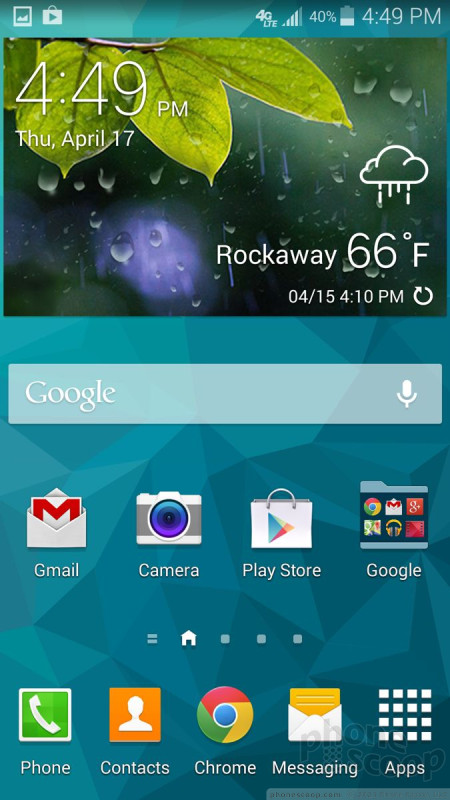







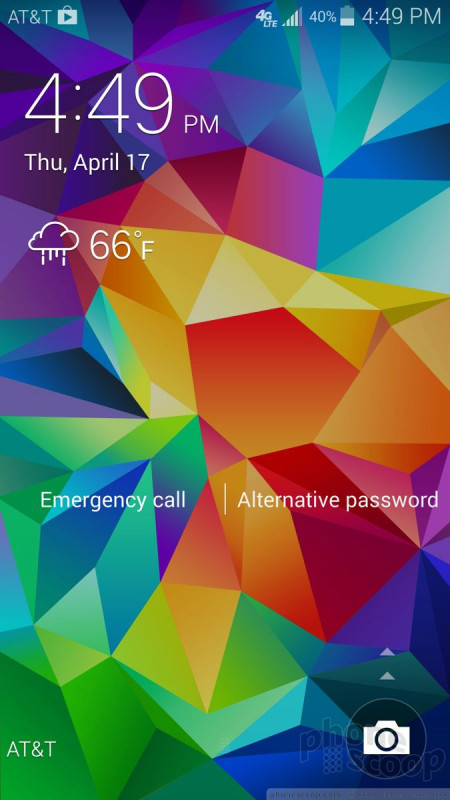







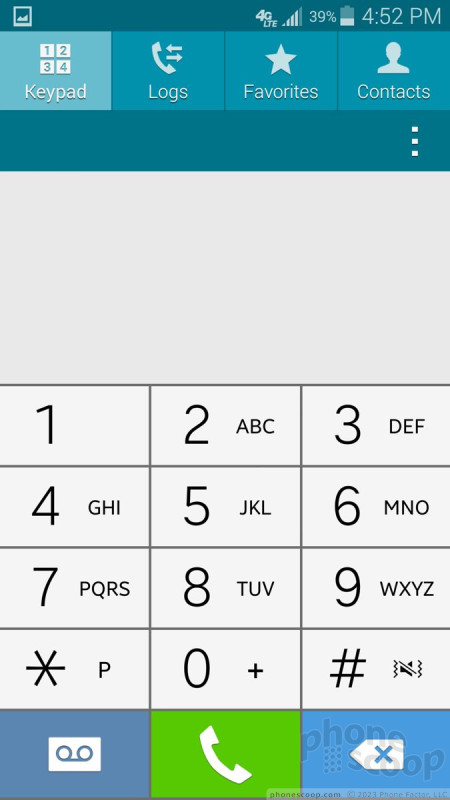

























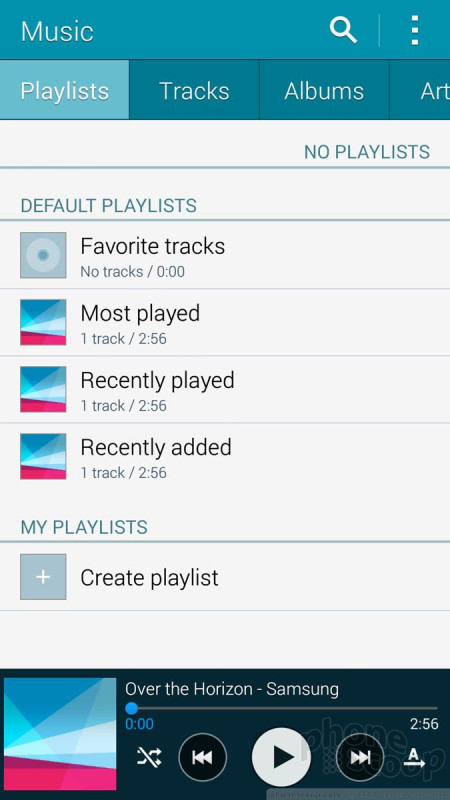


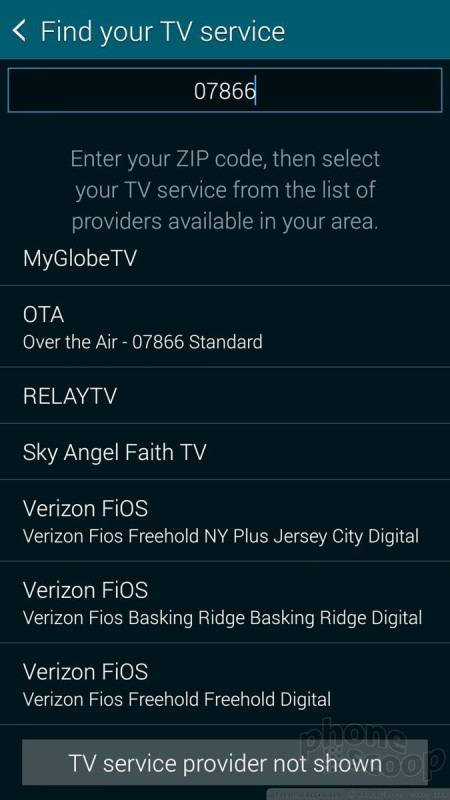










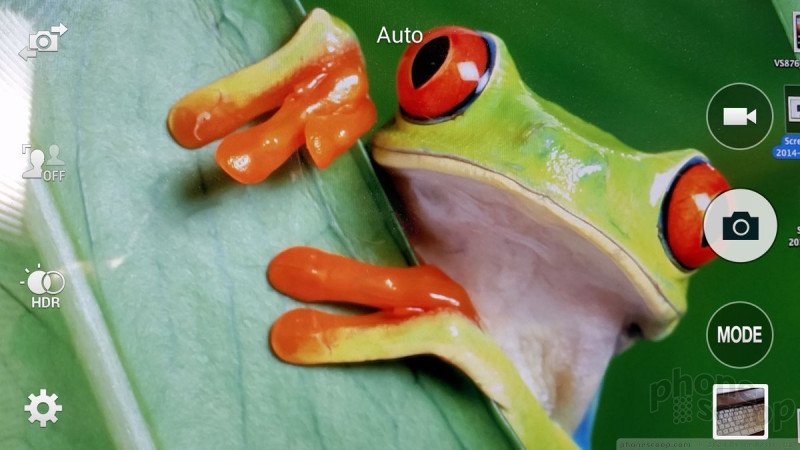





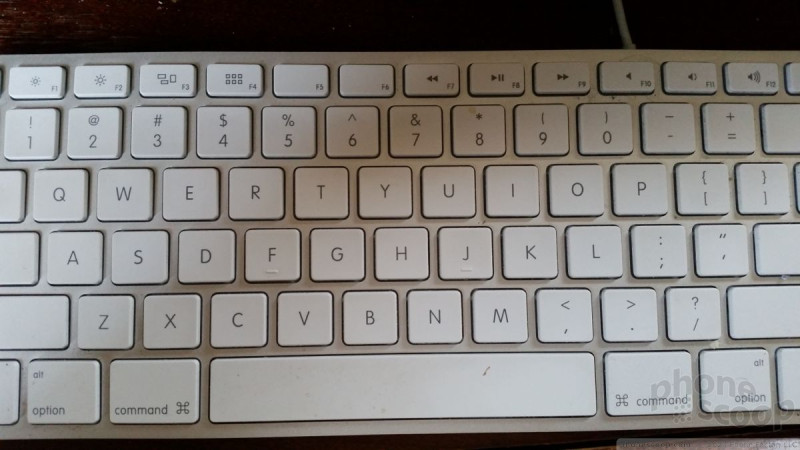



















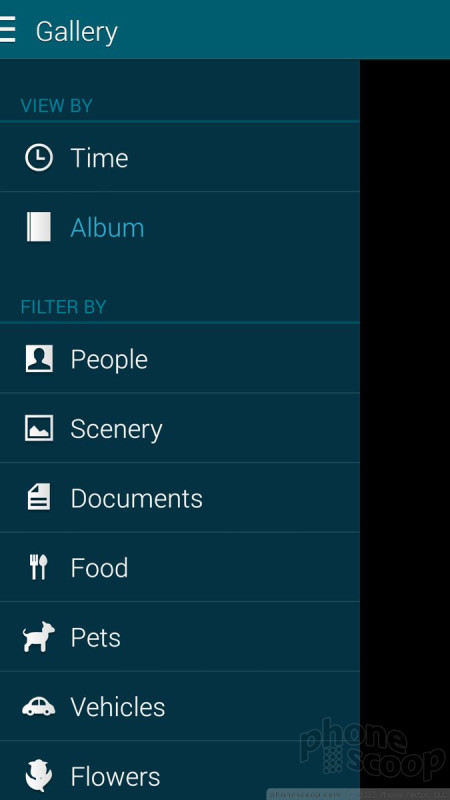
























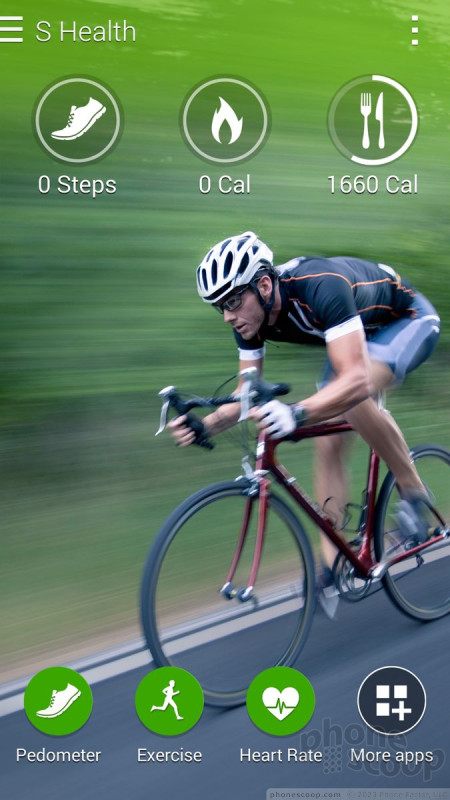




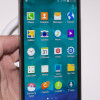 Hands-On: Samsung Galaxy S5
Hands-On: Samsung Galaxy S5
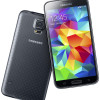 Samsung Galaxy S5 Is Waterproof, Adds Fingerprint Sensor
Samsung Galaxy S5 Is Waterproof, Adds Fingerprint Sensor
 Liveblog of Samsung Unpacked 5
Liveblog of Samsung Unpacked 5
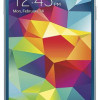 Best Buy Scores Electric Blue Galaxy S5
Best Buy Scores Electric Blue Galaxy S5
 Samsung Gives Its T-Mobile GS5 the Midas Touch
Samsung Gives Its T-Mobile GS5 the Midas Touch
 Samsung Galaxy S5 (GSM)
Samsung Galaxy S5 (GSM)




